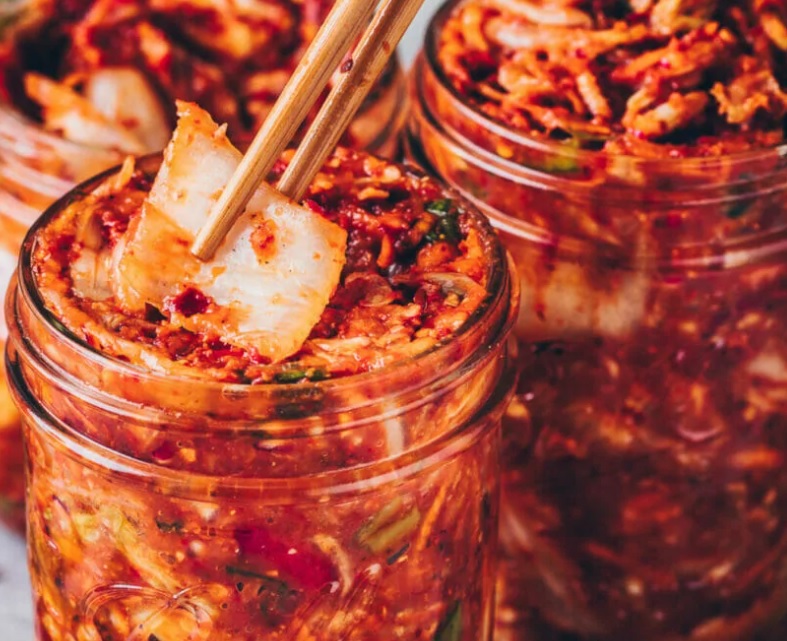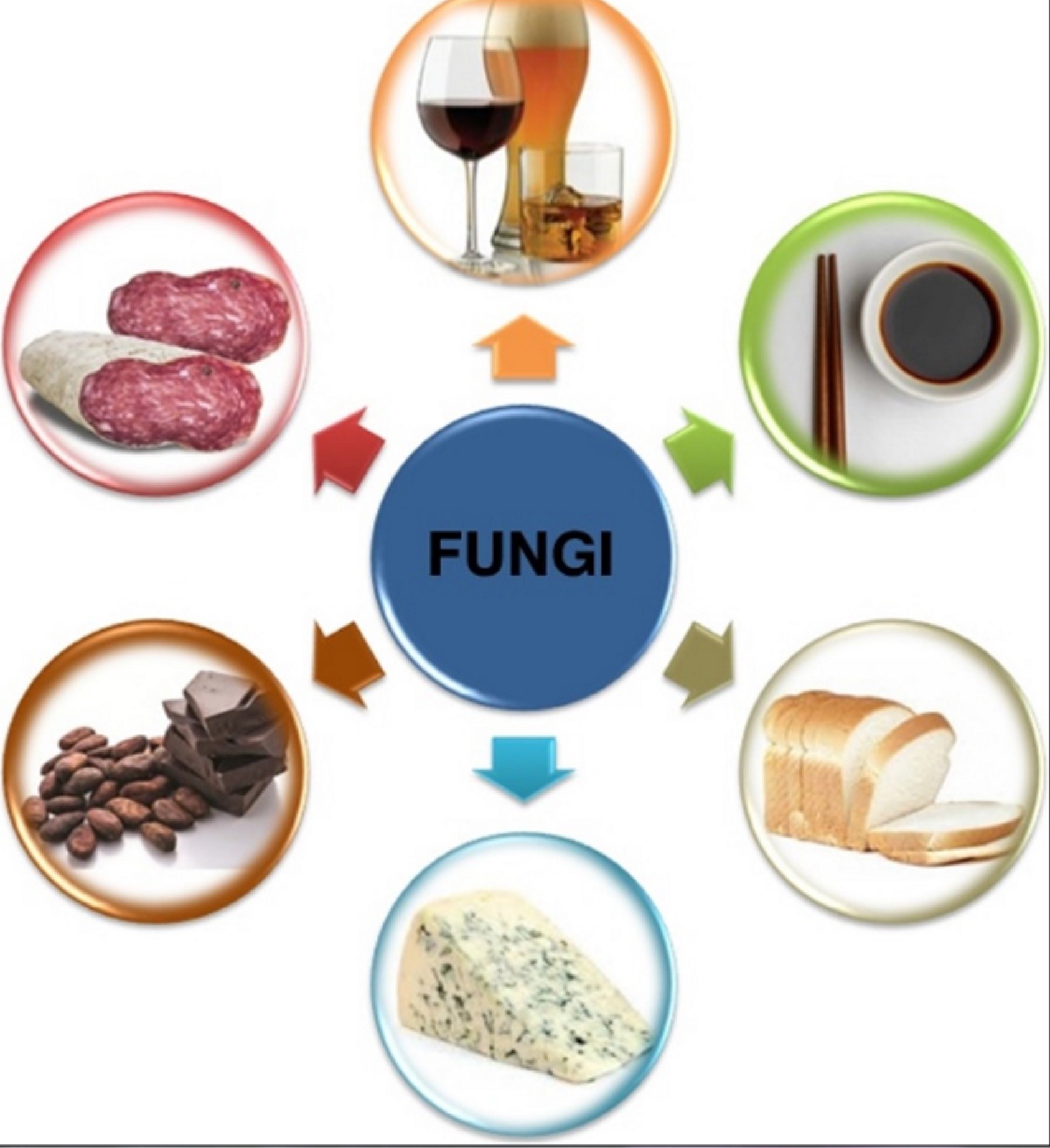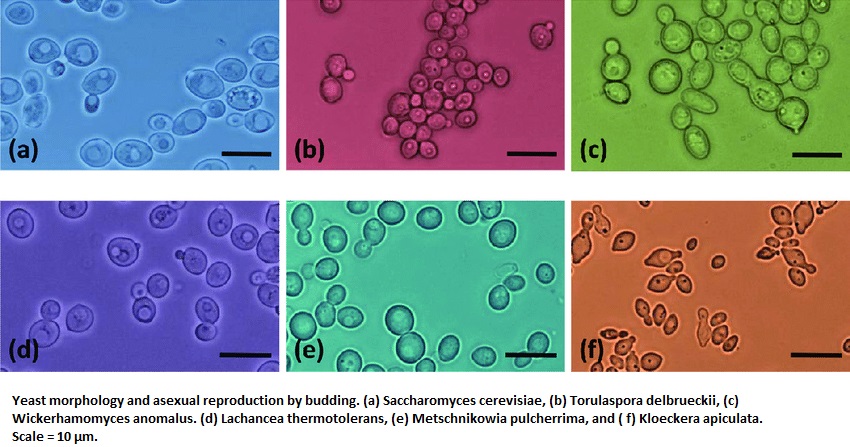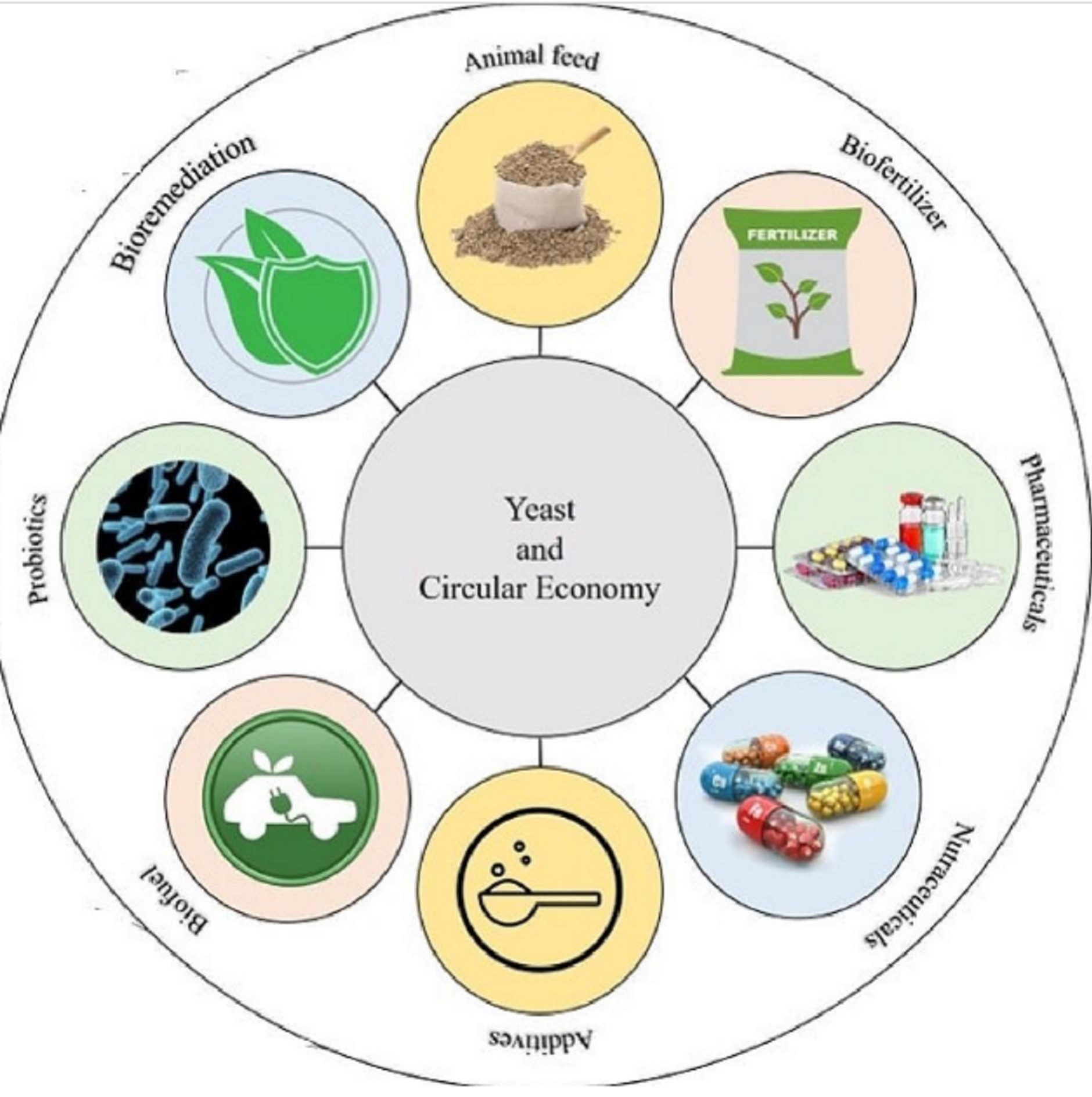Step into your kitchen, and you will witness the invisible force. It’s the yeast – the quiet magician that elevates the ordinary to the extraordinary. The global beer market witnesses yeast’s magic with a production of around 1.93 billion hectoliters annually. Yeast-powered technologies add up to a whopping $140 billion in money around the world which helps with research in medicine and vaccines. Yeasts can be viewed as superheroes of the micro-world! The realm of yeasts encompasses over 1500 distinct yeast types. It is also known as the “lab rat of genetics”.

Yeast cells are typically small, ranging from 3 to 5 micrometers in diameter. The color of yeast colonies can vary, from white to creamy or even reddish hues depending on the species. Yeast cells store energy in the form of glycogen, a complex carbohydrate. A single teaspoon of yeast can contain around 10 billion yeast cells, highlighting their small but numerous presence. Under ideal conditions, yeast can double its population every 90 minutes through the process of budding. During beer fermentation, yeast can produce over 1,000 times its weight in carbon dioxide gas. Despite its impact, the yeast species Saccharomyces cerevisiae has around 6,000 genes, far fewer than more complex organisms.
Yeast’s Ancient Journey: From Sumerian Libations to Modern Marvels
Yeast’s impact started way back with the Sumerians in ancient Mesopotamia. Around 6,000 years ago, they realized that a magical transformation occurred when they mixed water and grains, inadvertently creating the first instances of fermented beverages. They couldn’t have known it then, but the unseen hand behind this transformation was yeast, initiating the conversion of sugars into alcohol and birthing the earliest forms of beer. In the heart of the Nile, the Egyptians wielded yeast’s alchemical properties to elevate the mundane into the divine. Around 4,000 years ago, they discovered the art of leavening bread – a practice where yeast’s gaseous emissions created pockets of air in the dough, making it rise. This invention transformed baking resulting in delicious bread that represented achievement. Revolutionary research by Pasteur revealed the microbiological causes of fermentation shattering long-held beliefs in spontaneous genesis. Breweries worldwide employ approximately 750,000 tons of yeast annually for the fermentation that transforms wort into the golden elixir we savor.
Exploring Yeast’s Culinary Offerings: A Glimpse of Available Food Products
Bread and Bakery Delights
- Artisan Breads: Crusty baguettes, sourdough boules, and whole grain loaves – these bakery classics owe their airy textures and robust flavors to yeast’s fermentation magic.
- – Bagels: These chewy rings of delight are a perfect example of how yeast transforms dough into a doughnut-shaped delicacy.

Beer and Beverages
- Craft Beer: The craft beer movement showcases a multitude of styles, each highlighting yeast’s impact on flavor profiles, from pale ales to imperial stouts.
- Kombucha: This tangy, probiotic-rich tea is a result of yeast’s collaboration with bacteria, creating a fizzy and refreshing beverage.
Dairy Delicacies
- Yogurt: The creamy tartness of yogurt is born from the symbiotic relationship between yeast and bacteria during fermentation.
- Cheeses: Soft and spreadable or hard and crumbly, cheeses owe their textures and flavors to the intricate interplay of yeast and microbes.
Condiments and Spreads
- Vegemite and Marmite: Yeast extracts are used to create these well-known spreads which lend a savory and distinctive flavor to breakfast or snacks.
- Soy Sauce: This umami-packed condiment derives its depth from yeast’s role in fermenting soybeans and wheat.

Ready-to-Eat Delicacies
- Pizza Dough: Pre-made pizza dough and crusts make home pizza nights a breeze, and yeast’s fermentation ensures a perfect rise.
- Fermented Pickles and Sauerkraut: These tangy treats are crafted through yeast-driven fermentation, offering a probiotic twist to traditional favorites.
Culinary Essentials
- Instant Yeast: Packaged in convenient sachets, instant yeast is a staple for home bakers, ensuring reliable and consistent rises.
- Nutritional Yeast: Plant-based pantry essential, nutritional yeast adds a cheesy flavor to dishes and is rich in vitamins.
Global Flavors
- Injera: This Ethiopian flatbread, with its distinct spongy texture, is a result of yeast fermentation.
- Naan: An essential accompaniment to Indian cuisine, naan’s pillowy texture is thanks to yeast’s influence.
Ethnic and Gourmet Offerings
- Miso Paste: Essential in Japanese cuisine, miso’s complex umami flavor is a result of yeast’s role in fermentation.
- Kimchi: The common Korean food highlights how yeast adds to the fermentation that creates the strong, spicy taste in kimchi.

Dry yeast also called baker’s yeast is a handy and flexible ingredient. Dehydration has been used to remove the moisture from this type of yeast making it more stable for storage. This indicates that dried yeast will last a long period if kept at room temperature, in a cold, dry atmosphere. Yeast requires three essential factors to thrive: moisture, a source of food (usually sugar), and warm temperatures. When yeast is provided with these conditions, it becomes activated and starts to grow. Its preferred food source is sugar in its various forms, though it can also consume carbohydrates in other formats.
Unveiling Yeast: A Fungus of Microscopic Marvel
Yeast coexists with molds, mushrooms, and other fungi in the fungal kingdom and has characteristics that are common with them. Yeast cells are eukaryotic, meaning they possess membrane-bound organelles and a defined nucleus. This complexity allows yeast to perform intricate functions necessary for its survival and its role in fermentation.
Yeast cells reproduce through a process known as budding. During budding, a new cell, known as a “bud,” forms as an outgrowth on the parent cell. As the bud matures, it enlarges until it separates from the parent, becoming an independent yeast cell. This method of reproduction allows yeast populations to grow rapidly, making them valuable assets in fermentation processes.
Fermentation: Yeast’s Transformation
When yeast meets sugar in the absence of oxygen, it’s like a magic spell that sets off a series of changes. This starts with breaking down sugar into smaller bits through glycolysis. The real magic happens when those bits transform into alcohol and carbon dioxide (the fizzy part). It’s the reason why bread rises and why drinks like beer have that special kick and fizz.
Think of anaerobic respiration as yeast’s way of doing things without taking a breath. This outstanding skill is important in a variety of situations. It helps the dough rise when cooked, adding to the bread’s light texture. Yeast’s carbon dioxide bubbles during baking create the perfect airy crumb and that signature golden crust. Around 92% of bread’s volume comes from these yeast-made bubbles. In beer, the yeast goes beyond bubbles. It adds flavors called “esters,” creating fruity, spicy, or floral notes. The yeast’s job is so important that about 50-70% of beer’s overall flavor comes from fermentation. Wine? Yeast plays matchmaker, turning grapes into that fine red or white.

Exploring Yeast’s Health Benefits
- Rich in Nutrients: It is a source of B vitamins including B1 (thiamine), B12 (riboflavin), B3 (niacin), B5 (pantothenic acid), B6 (pyridoxine), and B9 (folate), which plays a crucial role in nerve function and energy metabolism.
- Gut Health Support: Some yeast strains, like Saccharomyces boulardii, are used as probiotics. Yeast helps by balancing your gut bacteria, which might help with digestion and issues like diarrhea.
- Blood Sugar Regulation: Some research suggests that yeast beta-glucans, a type of soluble fiber, may help improve insulin sensitivity and regulate blood sugar levels. This could be beneficial for managing diabetes. Scientists ingeniously engineer yeast to produce crucial compounds like insulin for diabetes or vitamins that boost our well-being.
- Immune System Boost: Yeast-derived beta-glucans also show promise in enhancing immune function.
Potential Risk Factors
- Allergic Reactions: Some individuals may be allergic to yeast or specific yeast proteins. This can manifest as skin rashes, itching, or digestive discomfort. If allergic, avoiding yeast-containing foods and products is essential.
- Candida Overgrowth: Candida albicans, a yeast strain present in the body can sometimes overgrow, causing infections like oral thrush or vaginal yeast infections.
- Histamine Intolerance: Yeast, particularly in fermented foods and alcoholic beverages, can contribute to histamine levels in the body. Headaches, hives, or stomach problems are some indications of histamine intolerance.
- Unintended Fermentation: In rare cases, consuming active yeast without proper baking or brewing can lead to gas production in the digestive tract, causing discomfort.
As with many things, moderation and individual sensitivity are key. Particularly for vegetarians and vegans, using nutritional yeast in a balanced diet can offer important nutrients.
Yeast Supplements for Fitness: Boosting Performance and Recovery
Yeast-based supplements have become popular options for improving performance and speeding recovery in the field of sports and fitness. Brewer’s yeast, a standout example, is rich in minerals, and protein. Yeast contains key elements like potassium, phosphorus, zinc, and magnesium that support cell, nerve, and muscle function along with essential proteins for growth. These nutrients work together to sustain energy, enhance muscle activity and promote overall well-being.
Athletes and fitness enthusiasts often incorporate brewer’s yeast into their diets to support endurance during workouts and optimize post-exercise muscle recovery. Yeast is generally low in fat content. The caloric content of yeast can vary based on factors like moisture content and strain. Generally, yeast has a moderate caloric value.
Saccharomyces cerevisiae, a strain known for its potential to lessen muscular stiffness and hasten recovery after severe activity is another notable yeast-based supplement. Researchers have examined the unique elements of this strain to see if they have the ability to reduce exercise-related oxidative damage, inflammation and hasten recovery. Such yeast supplements provide a natural option for people looking to improve their workout performance and reduce recovery time.
Considerations:
- Quality Assurance: Choose high-quality yeast supplements from reputable brands to ensure accurate labeling and purity.
- Dosage and Timing: Follow the recommended dosages and guidelines provided on the supplement label. Timing your supplement intake around workouts can optimize benefits.
- Individual Needs: Before adding yeast supplements to your routine, especially if you have health issues or take medications, consult a healthcare professional or registered dietician.
Exploring Microbial Yeast Diversity: Varied Strains and Roles
- Brettanomyces: It introduces wild and unpredictable characteristics that add uniqueness to these beverages.
- Saccharomyces boulardii: This yeast strain offers probiotic properties and is used to help improve gut health, especially with diarrhea and certain digestive problems.
- Pichia pastoris: An industrial yeast strain used to produce proteins and enzymes on a large scale. It holds significance in biotechnology uses, such as manufacturing pharmaceuticals.
- Kluyveromyces lactis: This yeast strain is used in the dairy industry to produce enzymes for cheese and other dairy products.
- Debaryomyces hansenii: Often found in cheese ripening, this yeast contributes to the unique flavors and textures of certain types of cheese.
- Yarrowia lipolytica: It is being researched for its potential in industrial biotechnology and the manufacture of biofuels because of its ability to transform lipids into useful compounds.

Yeast Infections in Humans
- Normally, yeast coexists with other microorganisms in the body, but factors like weakened immune systems, hormonal changes, or imbalanced microbiomes can trigger overgrowth.
- Yeast infections can occur in various areas, including the mouth (oral thrush), genital region (vaginal candidiasis), skin folds (cutaneous candidiasis), and bloodstream (systemic candidiasis).
- Vaginal yeast infections are common and can result from antibiotic use, hormonal changes, diabetes, or pregnancy. Common symptoms include itching, burning pain during urination or sexual activity and abnormal discharge.
- Oral thrush causes white patches in the mouth, discomfort, and difficulty swallowing, affecting individuals with weak immune systems or using dentures.
- Systemic candidiasis is severe and affects the bloodstream, occurring in those with compromised immunity.
- Treatment involves antifungal medications like creams, oral pills, or suppositories, along with addressing underlying causes.
- Prevention includes good hygiene, managing diabetes, avoiding excessive antibiotic use, and maintaining a balanced diet to support a healthy microbiome.
- Recurrent or severe cases should be evaluated by a healthcare professional for proper diagnosis and management.
Diverse Applications of Yeast in Biotechnology and Industry
Yeast is used in a wide range of biotechnology and industrial applications which have a significant impact on numerous industries and sectors. Here are some key examples of its significance:
- Pharmaceutical Manufacturing: Yeast is harnessed to produce therapeutic proteins, vaccines, and insulin. Its cellular machinery efficiently synthesizes complex molecules, making it an economical method for large-scale production.
- Chemical Production: Fermentation driven by yeast can produce a variety of compounds such as organic acids, amino acids, and bio-based chemicals which can be utilized in cosmetic and plastic industries.
- Bioremediation: Yeast’s ability to absorb heavy metals and other contaminants from the environment is harnessed for bioremediation efforts, aiding in cleaning polluted water and soil.
- Drug Discovery: Yeast-based assays are used to screen potential drug compounds for their effects on specific biological targets, aiding in the early stages of drug discovery.
- Nutritional Supplements: Yeast is a source of essential vitamins, such as B-complex vitamins, and minerals like selenium.
- Bioinformatics: Yeast’s genome has been thoroughly studied and serves as a model for developing bioinformatics tools and algorithms for genetic data analysis and interpretation.
- Agriculture: Products made from yeast are used to improve the condition of the soil and encourage plant growth.

Enhancing Yeast’s Environmental Impact: Strategies for Sustainability
To mitigate potential negative environmental impacts and enhance yeast’s positive contributions, several strategies can be employed:
- Waste Treatment: Proper treatment of wastewater generated during yeast-based processes is essential to prevent contamination of water bodies. Before disposal, contaminants can be removed with the aid of effluent treatment technology.
- Sustainable Practices: Employing sustainable practices in yeast cultivation and industrial processes can minimize land use, reduce chemical inputs, and optimize resource utilization.
- Alternative Energy Sources: Exploring alternative energy sources for yeast cultivation and fermentation processes, such as renewable energy, can reduce the carbon footprint associated with these processes.
- Waste Valorization: Investigating ways to further convert waste generated during yeast-based processes into valuable byproducts or bio-based materials can minimize waste and enhance resource efficiency.
Frequently Asked Questions (FAQs):
Is there anything unethical about genetically altered yeast?
The use of genetically modified organisms like yeast raises ethical concerns including unintended environmental impacts and gene interaction with wild yeast, necessitating thorough safety assessments.
How is genetically modified yeast created?
Scientists employ sophisticated genetic engineering techniques to add or alter genes in yeast cells. This can include introducing genes from different organisms for specific traits or removing genes to enhance particular features. The aim is to develop yeast strains with customized attributes for industrial uses.
What negative outcomes might arise from consuming yeast?
While yeast is generally safe, potential side effects include allergic reactions, digestive issues from excessive consumption, interactions with health conditions or medications, gout risk due to purine content, potential weight gain, and contamination if mishandled. Not everyone experiences these effects, but consulting a healthcare professional before using yeast supplements or products, especially with existing health concerns, is wise.
Why are space yeast experiments chosen?
Due to its biological similarities, yeast makes an ideal model to study how living things react to changes in their environment.
Can people with gluten sensitivity or celiac disease consume products containing yeast?
Yeast doesn’t have gluten in it, so it’s gluten-free. But if you’re sensitive to gluten or have celiac disease, you should still be careful because foods with yeast (like bread) might have gluten ingredients.
Can I make yeast at home?
You can create your yeast starter at home often called “sourdough starter”. This natural yeast mixture can help your bread and baked stuff rise without using store-bought yeast.
How can I keep yeast fresher for a longer period?
Yeast should be stored in a cool, dry place. For longer shelf life, consider storing yeast in the refrigerator or freezer. Always check the packaging for specific storage recommendations.









